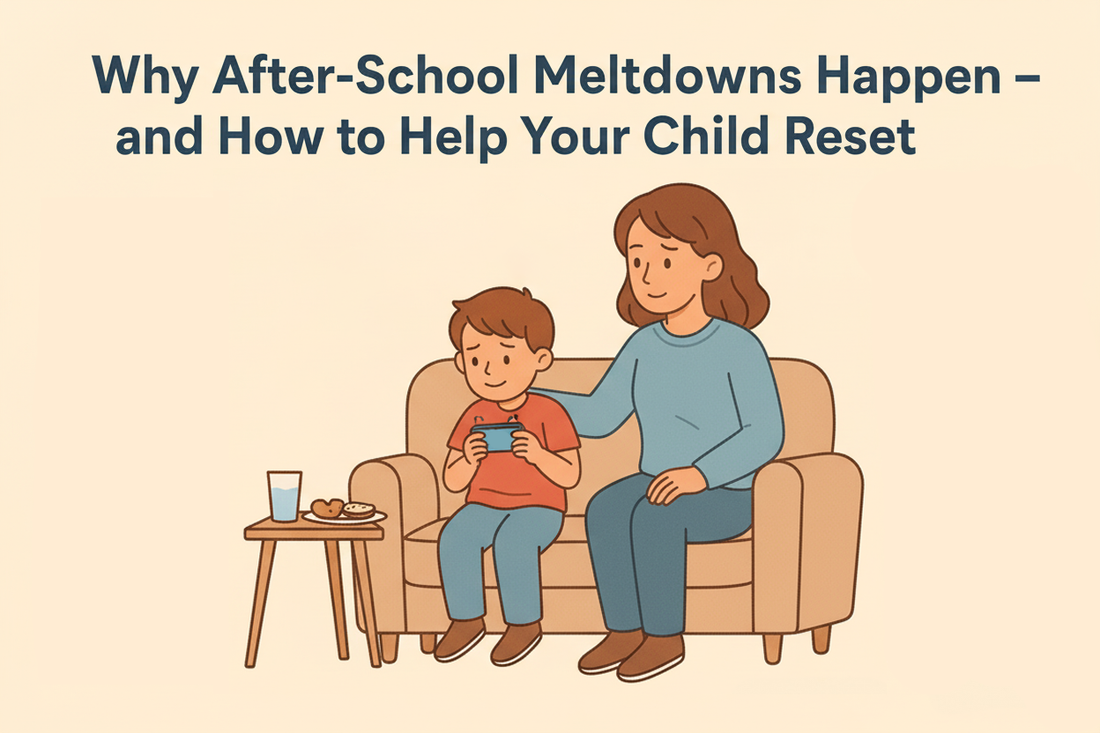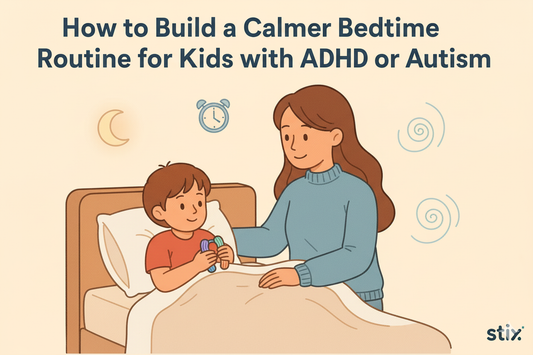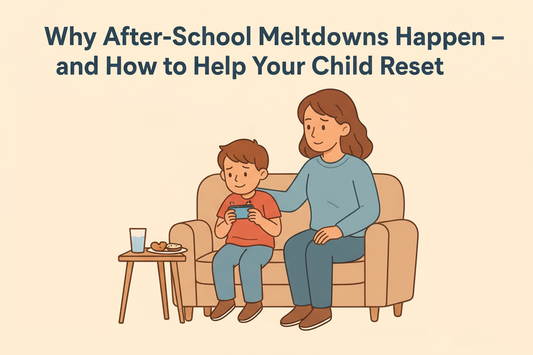Why After-School Meltdowns Happen – and How to Help Your Child Reset

When the School Day Ends, the Emotional Chaos Begins
You open the door, expecting a tired but happy child. Instead, you get a whirlwind of hyperactivity, refusal to follow simple directions, and tears over a crumpled homework sheet.
If this sounds familiar, you're not alone. Sally, a parent we spoke with, described her 9-year-old daughter as typical of many children who come home from school overwhelmed, hyper, and prone to sudden meltdowns.
This frustrating daily occurrence has a name: After-school restraint collapse. It’s when a child (or teen) uses every ounce of energy and self-control to "hold it together" all day at school, only to have that internal dam break the moment they feel safe at home.
Understanding why these after-school meltdowns happen is the first step toward finding a calmer solution.

The Core Reasons for After-School Meltdowns
For many kids, especially those with Autism or ADHD, the school day is an immense regulatory effort. The release comes at home, often in the form of a dramatic collapse.
Here are the key factors contributing to this phenomenon:
1. The Power of "Masking"
Many children, particularly those on the Autism spectrum, spend the entire school day masking—suppressing their sensory needs, emotional reactions, and self-stimulatory behaviours to meet social expectations. This is exhausting. Home is their safe place, and the moment they cross the threshold, the exhaustion is released in a torrent of emotion. This is the essence of after-school restraint collapse.
2. Sensory Overload and Fatigue
School is a constant stream of noise, movement, bright lights, smells (lunchroom, art supplies), and the demand to sit still. This relentless sensory input leads to profound sensory overload and cognitive fatigue. By 3 PM, their regulatory battery is completely drained.
3. Hunger, Thirst, and Physical Exhaustion
Sometimes, the cause is simple biology. Many children haven't drunk enough water or eaten a proper, sustaining snack since lunch. Low blood sugar and dehydration can turn a minor frustration into a major meltdown.
4. Difficulty with Transitions
Moving from the highly structured environment of school to the unstructured (or differently structured) environment of home is a difficult transition. It requires children to shift gears quickly, a process that can be challenging for those with executive function difficulties.
Tips to Help Your Child Reset After School
The goal is to create a predictable landing strip where your child can safely decompress and regulate before diving into homework or evening routines.
1. The "Quiet Time First" Rule
Resist the urge to launch immediately into questions about their day or demands about homework. Give them 15–20 minutes of quiet, low-demand time to themselves. This might mean sitting alone in their room or simply lying on the couch.
2. Fuel the Tank: Snack and Hydration
This is non-negotiable. Before any conversations or tasks begin, offer a complex carbohydrate and protein snack (e.g., apple slices with peanut butter, cheese and crackers) and a big drink of water. This helps stabilize blood sugar and combat physical fatigue.
3. Offer Sensory or Physical Regulation
Help them physically shake off the day's tension. This is where you proactively offer tools to regulate their nervous system:
-
Physical Release: Jumping on a trampoline, a quick stretch, or running around the garden.
-
Deep Pressure: A weighted blanket hug or a bear squeeze.
-
Tactile Tools: Offering a sensory product like Stix to engage their hands and focus their mind.
4. Create a Predictable After-School Ritual
Consistency reduces anxiety. Your ritual doesn't have to be complicated, but it must be the same every day. Example ritual: Snack → 15 min Stix quiet time/play → check bags → free time. This predictability helps kids transition smoothly and minimizes after-school meltdowns.
5. Model Calmness (Parent Self-Regulation)
Your child will absorb your energy. Take a deep breath before you open the door. If you are stressed or rushing, your child will sense it. Self-regulation isn't just for kids; it's a co-regulation opportunity.
Stix: Your After-School Transition Tool
This is where a tool like Stix shines. It offers a tangible, playful bridge between "school mode" and "calm mode."
- Short, Engaging Activities: Stix activities, like Bubble Popping or Lion's Roar, are brief enough that they don't feel like a chore but engaging enough to capture a weary child's focus.
-
Tactile and Playful: It provides the necessary sensory regulation outlet for children whose hands and minds need to move, without demanding screen time. Kids want to use it, turning a mandated "calm down" into a voluntary activity.
-
Focus on Reset: A simple Stix activity after a snack can quickly shift a child’s attention away from their built-up stress, effectively preventing an after-school meltdown before it starts.
The biggest tip here is to not force your child to do anything in particular. Set up multiple options for them to gravitate to; whether that is their Stix Remotes, a nice snack, their favourite book or a game with their siblings.
End the Day Stronger
Tackling after-school restraint collapse requires empathy, patience, and consistency. By implementing these strategies, you can validate your child's exhaustion while providing the necessary support and tools for them to reset.
Try incorporating one of these approaches, and share your experience below! With a simple ritual and a practical tool like Stix, you can turn that chaotic after-school hour into a calm, connective time.



